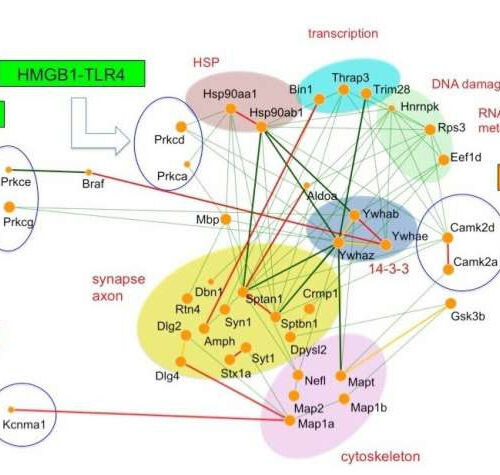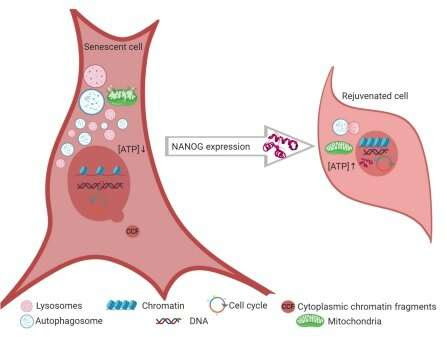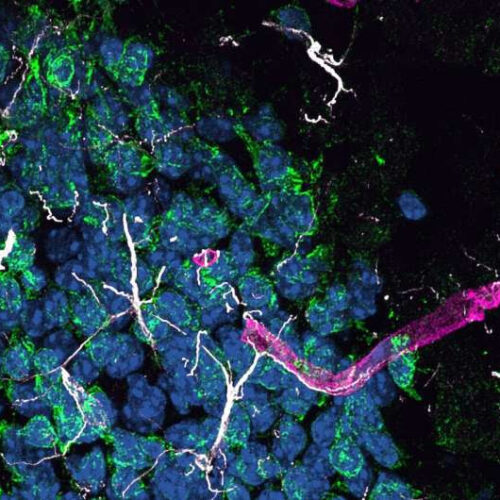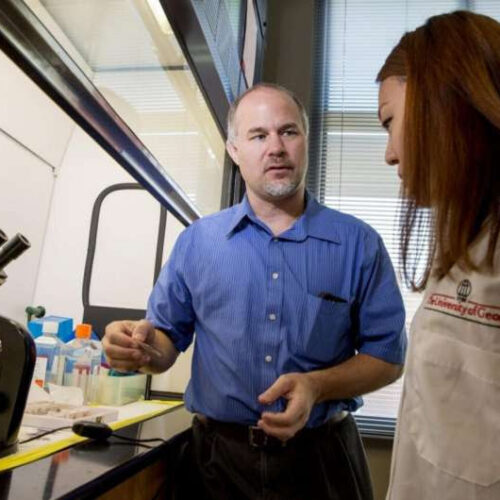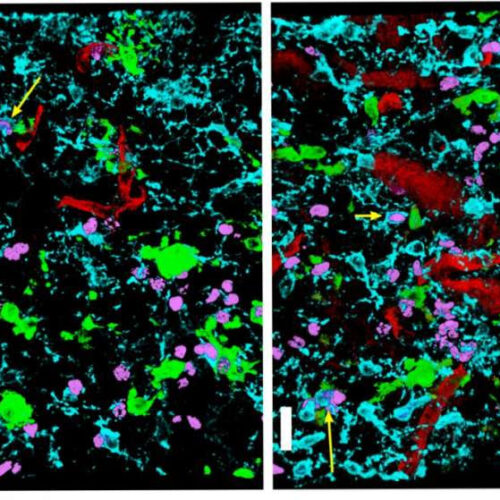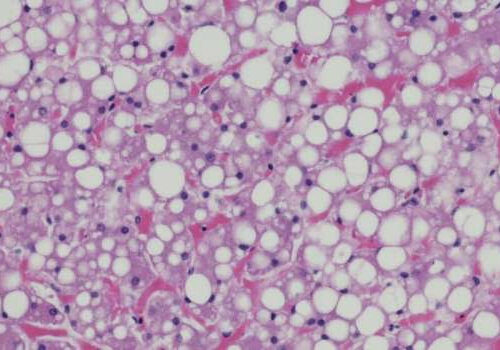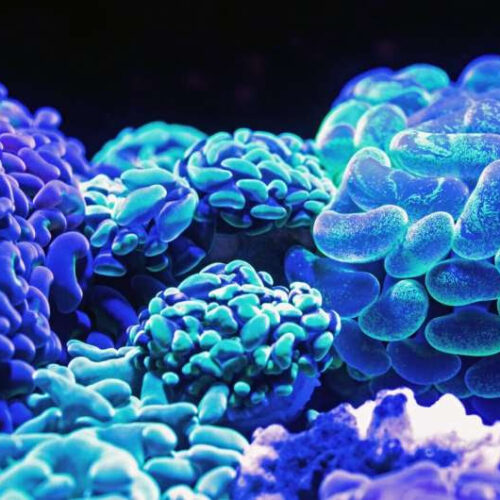by Tokyo Medical and Dental University Supercomputer-based dynamic molecular network analysis predicted HMGB1-TLR4 induced signal as the most important target of two major neurodegenerative dementias. The prediction was verified by significant phenotypic and pathological improvements of four types of mouse model of frontotemporal lobar degeneration treated by anti-HMGB1 antibody. Credit: Department of Neuropathology, TMDU Dementia...
Tag: <span>Protein</span>
Study shows protein that reverses aging of skeletal muscle
by Cory Nealon, University at Buffalo The illustration shows a senescent muscle cell (left), including the numerous factors that led to its declining ability to divide and grow. It also shows the same type of cell after the overexpression of NANOG, which reversed many of the factors. Credit: University at Buffalo A University at Buffalo-led research team has...
Protein from the liver may cause Alzheimer’s disease in the brain
by Public Library of Science Hippocampal dentate gyrus in HSHA mice, showing significant astrocyte activation (GFAP: white) and oxidative stress (8OHdG: green) surrounding the cerebral capillaries (laminin-a4: magenta). Nuclei staining with DAPI (blue). Credit: John Charles Louis Mamo, Lam V et al., 2021, PLOS Biology, CC BY 4.0 (creativecommons.org/licenses/by/4.0/) Amyloid protein made in the liver can cause...
Researchers find protein may protect against neurodegenerative diseases
HIROSHIMA UNIVERSITY IMAGE: TAKING ADVANTAGE OF KNOWLEDGE ON TRANSLATION, HIROSHIMA UNIVERSITY RESEARCHERS EXAMINED WHETHER THE TRANSLATIONAL REGULATORY PROTEIN 5MP CAN SUPPRESS RAN TRANSLATION, WHICH WOULD ALSO SUPPRESS THE PRODUCTION OF THE TOXIC REPEAT PEPTIDE PRODUCTS. CREDIT: KATSURA ASANO, HIROSHIMA UNIVERSITY Cells translate their genetic material at rapid rates with exquisite precision to reproduce, repair damage...
Researchers identified the protein responsible for cancer’s aggressiveness
by University of Georgia Dr. Brian Cummings interacts with a student in a laboratory. Credit: Dorothy Kozlowski/UGA Prostate cancer is the second most common cancer among men, according to the American Cancer Society. It’s also one of the trickiest cancers to diagnose and treat. But new research from the University of Georgia has identified a protein...
Repairing nerves requires prods of protein
by University of Connecticut The arrows show where oligodendrocyte precursor cells (blue – all OPCs, pink- dividing OPCs) and their growth factor receptors are in contact with microglia (green) and their signaling proteins (red). Credit: Akiko Nishiyama When there’s damage in the body, our cells call for help. UConn brain researchers just found a new way cells do...
A protein that guards against prostate cancer, fatty liver disease, diabetes
by Chrystian Tejedor, Florida International University Fatty liver disease seen through a microscope. Credit: Florida International University FIU Biomolecular Sciences Institute researchers investigating a protein they hoped would be a tumor suppressor instead discovered it was responsible for protecting people from so much more. It turns out Inositol Polyphosphate-4-Phosphatase Type II B, or INPP4B, protects obese...
IS THIS PROTEIN A TARGET FOR EATING DISORDER DRUGS?
As reported in Science Translational Medicine, researchers pinpointed a protein called melanocortin 3 receptor (or MC3R) as an avenue for accessing the brain circuitry that controls the body’s energy balance and food intake. The research offers preliminary evidence that manipulating the MC3R can either stimulate or suppress food intake. The MC3R sits on the surface of neurons,...
Breakthrough in the understanding of a protein with a key role in several cancers
UMEA UNIVERSITY The neutron reflexometry method has given scientists an atomic-level insight into the behaviour of Bcl-2, a protein that promotes cancerous cell growth. The new study was carried out by Umeå chemists in collaboration with the research facilities ESS and ISIS and is published in Nature Communications Biology. Elevated function of the cell-protecting membrane protein Bcl-2 can...
Protein linked to ALS/ataxia could play key role in other neurodegenerative disorders
by Doug Dollemore, University of Utah Health Sciences A new University of Utah Health study suggests that Staufen1, a protein that accumulates in the brains of.certain patients, is linked to several neurodegenerative disorders. Unsplash/CC0 Public Domain Neurological disorders are the number one cause of disability in the world, leading to seven million deaths each year. Yet...

